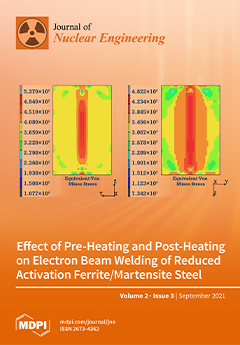This work extends the investigation of higher-order sensitivity and uncertainty analysis from 3rd-order to 4th-order for a polyethylene-reflected plutonium (PERP) OECD/NEA reactor physics benchmark. Specifically, by applying the 4th-order comprehensive adjoint sensitivity analysis methodology (4th-CASAM) to the PERP benchmark, this work presents the
[...] Read more.
This work extends the investigation of higher-order sensitivity and uncertainty analysis from 3rd-order to 4th-order for a polyethylene-reflected plutonium (PERP) OECD/NEA reactor physics benchmark. Specifically, by applying the 4th-order comprehensive adjoint sensitivity analysis methodology (4th-CASAM) to the PERP benchmark, this work presents the numerical results of the most important 4th-order sensitivities of the benchmark’s total leakage response with respect to the benchmark’s 180 microscopic total cross sections, which includes 180 4th-order unmixed sensitivities and 360 4th-order mixed sensitivities corresponding to the largest 3rd-order ones. The numerical results obtained in this work reveal that the number of 4th-order relative sensitivities that have large values (e.g., greater than 1.0) is far greater than the number of important 1st-, 2nd- and 3rd-order sensitivities. The majority of those large sensitivities involve isotopes
1H and
239Pu contained in the PERP benchmark. Furthermore, it is found that for most groups of isotopes
1H and
239Pu of the PERP benchmark, the values of the 4th-order relative sensitivities are significantly larger than the corresponding 1st-, 2nd- and 3rd-order sensitivities. The overall largest 4th-order relative sensitivity
is around 291,000 times, 6350 times and 90 times larger than the corresponding largest 1st-order, 2nd-order and 3rd-order sensitivities, respectively, and the overall largest mixed 4th-order relative sensitivity
is also much larger than the largest 2nd-order and 3rd-order mixed sensitivities. The results of the 4th-order sensitivities presented in this work have been independently verified with the results obtained using the well-known finite difference method, as well as with the values of the corresponding symmetric 4th-order sensitivities. The 4th-order sensitivity results obtained in this work will be subsequently used on the 4th-order uncertainty analysis to evaluate their impact on the uncertainties they induce in the PERP leakage response.
Full article




